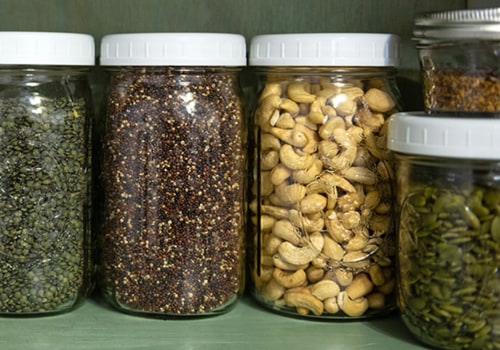Shelf life refers to the length of time that food products remain safe to consume and retain their desired sensory, chemical, physical, and microbiological characteristics when stored under recommended conditions. Various factors influence the shelf life of food, including the type of food, packaging, storage conditions, and processing methods. Understanding shelf life is crucial for both consumers and manufacturers as it affects food safety, quality, and economic aspects.
One of the primary factors affecting shelf life is the type of food. Perishable items, such as fresh fruits, vegetables, meat, and dairy products, have a shorter shelf life compared to non-perishable items like canned goods, grains, and dried legumes. For instance, fresh produce and meats need to be consumed or properly stored within a few days to prevent spoilage, whereas canned beans can last for years without significant quality degradation. The intrinsic properties of food, such as moisture content, acidity, and nutrient composition, play significant roles in determining their shelf life.
Packaging is another critical factor influencing shelf life. Modern packaging technologies aim to extend the shelf life of food products by protecting them from external factors such as air, moisture, light, and microorganisms. For example, vacuum packaging removes air from the package, reducing the growth of aerobic bacteria and molds, thus extending the shelf life of items like cheese and meats. Similarly, modified atmosphere packaging (MAP) alters the atmosphere inside the package, typically by reducing oxygen levels and increasing carbon dioxide levels, to slow down microbial growth and oxidative reactions in foods like fresh produce and bakery products.
Storage conditions, including temperature, humidity, and light exposure, also significantly affect the shelf life of food. Refrigeration and freezing are common methods to extend the shelf life of perishable items by slowing down enzymatic and microbial activities. For example, dairy products like milk and cheese, as well as meats, can be kept for weeks or even months when stored at the right temperatures. Conversely, improper storage can lead to rapid spoilage. For instance, leaving dairy products at room temperature can lead to souring and spoilage within hours.
Processing methods such as pasteurization, canning, drying, and freezing are employed to enhance the shelf life of food products. Pasteurization involves heating food to a specific temperature to kill harmful bacteria, thereby extending the shelf life of products like milk and juice. Canning involves sealing food in airtight containers and heating them to destroy microorganisms, making it possible for canned vegetables, fruits, and meats to last for years. Drying removes moisture from food, inhibiting the growth of bacteria, yeasts, and molds, thus prolonging the shelf life of items like dried fruits, spices, and jerky. Freezing preserves food by slowing down the activity of microorganisms and enzymes, making it an effective method for storing a wide range of food products, from vegetables to prepared meals.
Shelf life is not just about safety; it also encompasses the quality aspects of food, such as taste, texture, and nutritional value. Over time, even non-perishable items may lose their quality. For example, while dried herbs and spices may not spoil in the traditional sense, they can lose their potency and flavor. Similarly, frozen foods can develop freezer burn, affecting their texture and taste, even if they remain safe to eat.
One specific example of a product with a notable shelf life is free range eggs from NZ. These eggs, sourced from hens that roam freely, generally have a shelf life of several weeks when stored in a refrigerator. The packaging often indicates the best before date, but proper storage can sometimes extend their usability slightly beyond this date without compromising safety or quality. Free range eggs are known for their superior taste and nutritional profile compared to conventionally produced eggs, and maintaining their freshness is key to enjoying these benefits.
In conclusion, understanding the shelf life of food is essential for ensuring food safety, quality, and reducing waste. Consumers can make informed decisions about purchasing, storing, and consuming food by considering the factors that influence shelf life. Meanwhile, advancements in packaging, processing, and storage technologies continue to enhance the shelf life of various food products, helping to meet the demands of modern lifestyles and reducing the economic impact of food waste.







